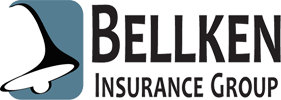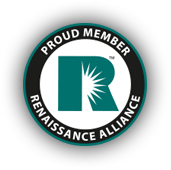Preparing Your Commercial Building for Hurricane Season: Insurance Gaps You Might Miss
See How We're Different
or call us: 954-233-0733
As hurricane season approaches, businesses in coastal regions must prioritize preparedness. While many focus on physical preparations, such as reinforcing structures and securing outdoor items, it is equally crucial to examine insurance coverage. Understanding potential gaps in commercial property insurance can save businesses from significant financial losses during and after a storm. This article explores essential steps to prepare your commercial building for hurricane season and highlights common insurance pitfalls that often go unnoticed.
The Importance of Comprehensive Insurance Coverage
Insurance is a safety net that protects businesses from unforeseen disasters. However, many business owners assume their existing policies will cover all potential damages caused by hurricanes. This assumption can lead to devastating financial consequences. Understanding the nuances of commercial property insurance is vital for adequate protection.
Understanding Your Policy
Commercial property insurance typically covers physical damage to buildings and their contents. However, policies can vary significantly in terms of coverage limits, exclusions, and deductibles. It is essential to review your policy in detail, ensuring that it aligns with the specific risks associated with hurricanes.
For instance, standard policies may not cover flood damage, which is a common consequence of hurricanes. Business owners should consider purchasing additional flood insurance or endorsements to fill these gaps. Consulting with an insurance agent can provide clarity on what is covered and what is not, allowing for informed decisions. Moreover, it is wise to stay updated on any changes in local regulations or insurance laws that may impact coverage options, as these can evolve in response to climate change and increasing storm activity.
Assessing Coverage Limits
Another critical aspect of commercial insurance is understanding coverage limits. Many policies have specific caps on payouts, which may not be sufficient to cover the full extent of damages incurred during a hurricane. It is advisable to conduct a thorough assessment of the property to determine its replacement cost, ensuring that the coverage limits reflect current market values.
Additionally, consider the potential loss of income during the recovery period. Business interruption insurance can help cover lost revenue while the property is being repaired. However, this coverage also has limits, so it is essential to evaluate whether the policy provides adequate financial support for an extended downtime. Furthermore, businesses should also explore the option of contingent business interruption insurance, which can protect against losses incurred due to disruptions in the supply chain or the inability of key suppliers to operate following a hurricane. This additional layer of coverage can be crucial for businesses that rely heavily on external vendors or partners to maintain their operations.
Identifying Common Insurance Gaps
Despite the best intentions, many business owners overlook specific insurance gaps that can lead to significant financial repercussions. Recognizing these gaps is crucial for comprehensive hurricane preparedness. A thorough review of insurance policies not only helps in identifying these gaps but also ensures that businesses are equipped to handle the aftermath of a hurricane effectively. This proactive approach can make a substantial difference in a business's ability to recover and thrive post-disaster.
Flood Insurance: A Must-Have
One of the most significant gaps in commercial property insurance is the lack of flood coverage. Many assume that their standard policies will cover water damage, but this is often not the case. Flood insurance is a separate policy that must be purchased explicitly to protect against flood-related damages. Given the unpredictable nature of hurricanes, relying solely on general property insurance can leave businesses vulnerable to substantial losses.
In regions prone to hurricanes, flood insurance is essential. Even a few inches of water can cause extensive damage to a commercial building, leading to costly repairs and prolonged downtime. Business owners should assess their flood risk based on their location and consider investing in a flood insurance policy to safeguard their assets. Additionally, understanding the National Flood Insurance Program (NFIP) can provide insights into available coverage options and help businesses make informed decisions about their flood insurance needs.
Wind Damage Coverage
While hurricanes are known for their heavy rainfall, wind damage is often the primary cause of destruction. Many insurance policies include wind damage coverage, but the specifics can vary. It is crucial to verify whether your policy includes coverage for wind-related damages and to what extent. This verification process can prevent unpleasant surprises when filing a claim after a storm.
Some policies may have specific exclusions or higher deductibles for wind damage, particularly in high-risk areas. Understanding these details can help business owners prepare for potential losses and make necessary adjustments to their coverage. Furthermore, investing in wind-resistant building materials and infrastructure can mitigate damage and potentially lower insurance premiums, making it a smart financial decision in the long run.
Debris Removal and Cleanup Costs
After a hurricane, the aftermath often involves significant debris removal and cleanup efforts. Unfortunately, many commercial property insurance policies do not fully cover these costs, leaving businesses to shoulder the financial burden. It is essential to review the policy to determine whether debris removal is included and to what extent. The costs associated with clearing debris can quickly escalate, especially in heavily affected areas where the demand for cleanup services surges.
In some cases, business owners may need to purchase additional coverage or endorsements to ensure that cleanup costs are adequately addressed. This proactive approach can prevent unexpected expenses that arise during the recovery process. Furthermore, establishing relationships with local cleanup and restoration companies before a disaster strikes can streamline the recovery process, allowing businesses to act swiftly and efficiently when the need arises. Understanding the full scope of potential costs associated with hurricane recovery can empower business owners to make informed decisions and secure their financial futures.
Preparing Your Building for Hurricane Season
While insurance is a critical component of hurricane preparedness, physical preparations for the building itself are equally important. Taking proactive steps can minimize damage and ensure the safety of employees and customers.
Conducting a Property Assessment
Before hurricane season begins, conduct a thorough assessment of the commercial property. This evaluation should include checking the structural integrity of the building, inspecting the roof, windows, and doors, and identifying any vulnerabilities that could be exacerbated by high winds or flooding.
Addressing these vulnerabilities may involve reinforcing windows with storm shutters, securing doors, and repairing any existing damage. A well-maintained building is more likely to withstand the forces of a hurricane, reducing the risk of extensive damage. Additionally, it is wise to evaluate the landscape surrounding the property. Trees that are too close to the building or that have dead branches can pose a significant risk during a storm. Pruning or removing these trees can further safeguard the structure and its occupants.
Creating an Emergency Plan
Every business should have a comprehensive emergency plan in place before hurricane season. This plan should outline procedures for evacuating employees, securing the property, and communicating with stakeholders during and after a storm.
Involving employees in the planning process can help ensure that everyone understands their roles and responsibilities. Regular drills and training sessions can also prepare staff for emergencies, fostering a culture of safety within the organization. Furthermore, consider designating a specific emergency response team within your workforce. This team can be responsible for executing the emergency plan and can serve as a point of contact for external agencies, such as local emergency services, ensuring that communication lines remain open and effective during a crisis.
Securing Outdoor Items
Outdoor items, such as furniture, signage, and equipment, can become dangerous projectiles during a hurricane. Business owners should secure or store these items well before a storm hits. This proactive measure can prevent damage to the property and reduce risks to nearby individuals.
Additionally, consider installing permanent fixtures or anchors for larger outdoor items to minimize the risk of them being displaced during high winds. Taking these steps can significantly enhance the overall safety of the commercial property. It is also beneficial to create a checklist of all outdoor items that need to be secured, ensuring that nothing is overlooked in the rush to prepare. This checklist can include items such as trash bins, planters, and promotional displays, which, if not properly secured, can cause injury or damage during severe weather events. By being thorough in these preparations, businesses can not only protect their property but also demonstrate a commitment to the safety of their community.
Post-Hurricane Actions: Documenting Damage
After a hurricane has passed, the immediate focus shifts to assessing and documenting any damage. This process is crucial for filing insurance claims and ensuring that business operations can resume as quickly as possible. The emotional toll of such natural disasters can be overwhelming, making it all the more important to have a systematic approach to recovery.
Conducting a Damage Assessment
Once it is safe to return to the property, conduct a thorough damage assessment. This assessment should include taking photographs and videos of all affected areas, documenting the extent of the damage, and creating a detailed inventory of lost or damaged items. It's advisable to start from the exterior and work your way inside, noting any structural damage, fallen trees, or debris that may pose a hazard. Be sure to check for water intrusion, as this can lead to mold growth if not addressed promptly.
Having comprehensive documentation will streamline the claims process with the insurance company. It is advisable to keep records of all communications with the insurance provider and any contractors involved in the recovery efforts. Furthermore, consider keeping a journal that details your recovery journey, including dates of inspections, conversations, and any steps taken to mitigate further damage. This can serve as a valuable resource should disputes arise with your insurer or contractors.
Contacting Your Insurance Provider
After documenting the damage, contact your insurance provider to initiate the claims process. Be prepared to provide all necessary documentation and details about the damages incurred. Understanding the claims process can help ensure a smoother experience and reduce the time it takes to receive compensation. Familiarize yourself with your policy's coverage limits and exclusions, as this knowledge can empower you during discussions with your insurer.
It is also essential to be aware of any deadlines for filing claims, as missing these deadlines can jeopardize the ability to receive coverage for damages. Staying organized and proactive during this time can make a significant difference in the recovery process. Additionally, consider reaching out to local disaster relief organizations that may offer assistance or resources to help you navigate the recovery phase. These organizations can provide valuable support and may even have information on grants or low-interest loans available for those affected by the hurricane.
Reviewing and Updating Your Insurance Regularly
Insurance needs can change over time due to various factors, including renovations, changes in business operations, or shifts in the local environment. Regularly reviewing and updating insurance coverage is essential to ensure that it remains adequate and relevant.
Annual Policy Reviews
Conducting an annual review of your insurance policy can help identify any gaps or areas that require adjustments. This review should consider changes in property value, new equipment, and any modifications made to the building.
Additionally, staying informed about changes in local regulations or building codes can impact insurance requirements. Engaging with an insurance professional can provide valuable insights into the current market and help ensure that the policy remains aligned with the business's needs. It’s also beneficial to document any changes made throughout the year, as this can serve as a helpful reference during the review process. Keeping a checklist of items to evaluate—such as the adequacy of liability coverage, the status of any claims made, and the overall performance of the insurance provider—can streamline the review and make it more comprehensive.
Staying Informed About Local Risks
Understanding the specific risks associated with the local environment is crucial for effective insurance planning. Business owners should stay informed about potential changes in flood zones, hurricane patterns, and other relevant factors that may affect insurance coverage.
Participating in local community meetings or engaging with local emergency management agencies can provide valuable information about risks and preparedness strategies. This proactive approach can help businesses stay ahead of potential challenges and make informed decisions regarding insurance and preparedness efforts. Furthermore, utilizing resources such as local weather forecasts, historical data on natural disasters, and even engaging with neighboring businesses can foster a better understanding of the risks at hand. Creating a network of support within the community can also lead to collaborative risk management strategies, ensuring that businesses are not only prepared individually but also collectively, enhancing overall resilience against unforeseen events.
Conclusion: A Comprehensive Approach to Hurricane Preparedness
Preparing a commercial building for hurricane season requires a multifaceted approach that encompasses both physical preparations and comprehensive insurance coverage. By understanding potential insurance gaps, conducting thorough assessments, and implementing proactive measures, business owners can significantly reduce the risks associated with hurricanes.
Regularly reviewing and updating insurance policies, staying informed about local risks, and engaging employees in preparedness efforts can further enhance the overall resilience of the business. As hurricane season approaches, taking these steps can provide peace of mind and safeguard the future of the business against the unpredictable forces of nature.








